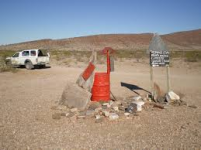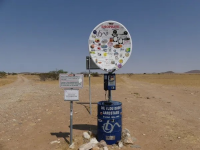I think Hyenas should be left alone to be hyenas:
Welcome Statement🧅
Welcome to Onionfarms. All races, ethnicities, religions. Gay, straight, bisexual. CIS or trans. It makes no difference to us. If you can rock with us, you are one of us. We are here for you and always will be.
Follow Onionfarms/Kenneth Erwin Engelhardt
Onionfarms Merchandise(Stripe Verified): Onionmart
Onionfarms.net (Our social network site powered by Humhub).Register and up your own little space to chat and hang out in.
You are using an out of date browser. It may not display this or other websites correctly.
You should upgrade or use an alternative browser.
You should upgrade or use an alternative browser.
The Hyena Men of Nigeria
- Thread starter Onion Null
- Start date
-
- Tags
- hyenas nigeria onionfarms
Cylon TARDIS Contact
Registered Member
Animal abuse?
Colonial times are over, cracker, George Floyd didn't die so you could go stealing those idiot's hyenas.I think Hyenas should be left alone to be hyenas:
Last edited by a moderator:
Pyro-Hedgie128
Registered Member
The cop got what he deserved you know. Bad cops don't discriminate on race, they will abuse their power on anyone. It pays to have friends in high places.
steel donut
Baby Onion
How can any idiot think of having a hyena as a pet?Colonial times are over, cracker, George Floyd didn't die so you could go stealing those idiot's hyenas.
【VOID】
Retired Staff
With selective breeding Hyenas could probably be domesticated. The Russians did it with foxes way back in the day.How can any idiot think of having a hyena as a pet?

Domesticated silver fox - Wikipedia
I'd like a domesticated Hyena tbh. Truth be told, I think that endangered animals should be selectively bred for domestication so that people can keep them as pets eventually.
Like lions. Release the aggressive offspring back into the wild, keep the more timid/trusting offspring. Breed the timid/trusting of humans offspring with each other, repeat until domesticated, that way the line would never go extinct and could be selectively bred again for aggression if the wild population ever went extinct. I don't know why we're not doing this. I want dangerous animals for pets.
D
Deleted member 1141
Finding the three drums of Namibia remains a highlight of my recently-started quest to learn geography.Going to have to disagree with you on Nigeria. Namibia has a red barrel, a green barrel, and a blue barrel. @Three



Besides the actual famous barrels, I guess the skeleton coast is famous for these other kind of barrels. And shipwrecks. If I were less Steppe-adapted, I might understand his a bit better, but it looks pretty badass. Like snowboarding, only with the risk of drowning and sharks!
@Sailfish have you visited Namibia?
In general, wild animals on grasslands of Africa cannot be domesticated. They tried that with Zebras over a century ago. It failed. Even among Zebras that have been habituated they are unstable and can't be trusted. It's in their DNA and it can't be bred out of them. It's a product of their environment because you have predators everywhere in plain sight. Domesticate a Cape Buffalo? Good luck with that one. It is nicknamed the "Widow Maker" among big game hunters. They have a savage nature that makes it impossible to domesticate. The Silver foxes in the fox farm experiment were obtained from fur farms and were already calmer than their wild counterparts.With selective breeding Hyenas could probably be domesticated. The Russians did it with foxes way back in the day.

Domesticated silver fox - Wikipedia
en.wikipedia.org
I'd like a domesticated Hyena tbh. Truth be told, I think that endangered animals should be selectively bred for domestication so that people can keep them as pets eventually.
Like lions. Release the aggressive offspring back into the wild, keep the more timid/trusting offspring. Breed the timid/trusting of humans offspring with each other, repeat until domesticated, that way the line would never go extinct and could be selectively bred again for aggression if the wild population ever went extinct. I don't know why we're not doing this. I want dangerous animals for pets.
AVMC
Remarkable Onion
Live stream (webcam) from the Namib Desert, Namibia :
Complementing the magnificence of the Namib Desert’s never-ending red sand dunes, Namibia Cam’s waterhole lies within the Gondwana Namib Park - bordering the Namib Naukluft Park. In this park, all man-made barriers have been removed, creating a space over 56,540 square kilometers (meaning 21,830 sq mi) - wildlife moves freely between the two parks and the other privately owned guest farms. In Gondwana Namib Park the Namib experience covers two sides. Three, in fact, as under the reddish sand there is brown sandstone – the fossilised dunes of an ancient Namib. Then there is the World Heritage Site of ‘Namib Sand Sea’, and only 60 km further south, the Namib shows yet another face: the valley of the ephemeral Tsauchab River – which cuts through the surging sand-sea and ends in famed Sossusvlei. But along with the fossilised dunes, Namib Sand Sea and Tsauchab River, a glorious new display has risen. Built in 2006, the special character of this waterhole, has not only an impact on the surrounding wildlife, but stretches across the globe, from home to home. This particular waterhole is situated within an open plain, 8km from Namib Desert Lodge. A solar-powered borehole fills a nearby reservoir and is monitored by a water float that opens as the waterhole’s levels decline. Being situated within a remote destination like the Namib Desert, intermittent interruptions are likely to occur at times.

